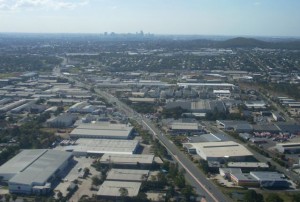Is it, as the town’s mayor and the Washington Post calls it, “the greenest street on the East Coast?” Or is it a tiny Band-Aid on an enormous, cancerous tumor? We’ll report, you decide.
The street in question, in Edmonston, Maryland (population1500), is three quarters of a mile long. It has just been re-engineered to be “green” with a year-long, 1.3-million-dollar project that was funded with stimulus money. It has trees for air conditioning, a bicycle lane for clean transportation, sidewalks of permeable concrete (water can soak through them), street lights powered by little wind turbines and landscaped areas — “rain gardens” — to absorb runoff.
Why in Edmonston? Such projects are often seen in tony, horse-country villages or wealthy McMansion suburbs, but Edmonston? A working-class town beset by d foreclosures, blight, unemployment and industrial toxins where, as the mayor often says, the population is diverse “except we don’t have any rich people”?
What Edmonmston has is not a bunch of environmental activists, but a bunch of people who are sick of being flooded out of their homes every few years. Not by the Anacostia River, a long-time industrial-sewage canal that bisects the low-lying town, but by runoff from the endless prairies of asphalt, concrete and roofing that surround the place. The Washington Post says the town has been a victim of its environment, but the opposite is true: the town is a victim of rampant industrialization that has destroyed the surrounding environment.
Has Edmonston solved its problem with 13-hundred yards of green street? Not likely. It is, of course, a small step in the right direction, using methods that have been known about and advocated unsuccessfully to developers and city-builders for about a quarter-century.
That this, in the year 2010, may be the “East Coast’s greenest (3900-foot-long) street” may be a matter of pride for Edmonston. Let it be said without reservation that they deserve credit for what they’ve done, and respite from the destructive forces that threaten their homes..
But how late, how small, and how unutterably sad that this is the best we can do.
